| The life cycle of monogonont rotifers |
|
 |
| Polyarthra vulgaris: specimen with parthenogenetic diploid amictic egg. The eyespot of the daughter can be recognized in the egg. |
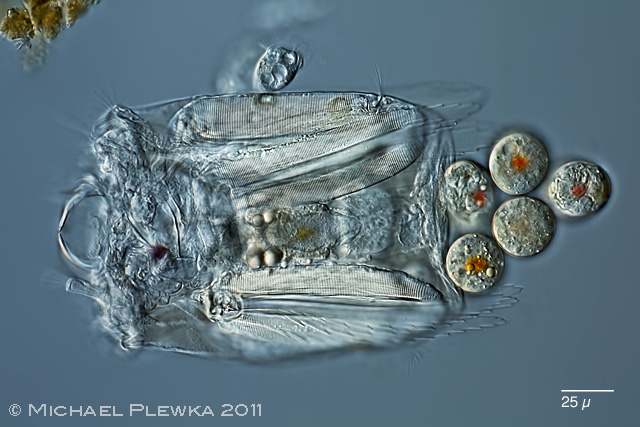 |
| Polyarthra vulgaris; specimen with male eggs (males hatch out of these eggs only ) which are obviously smaller than the amictic female eggs. |
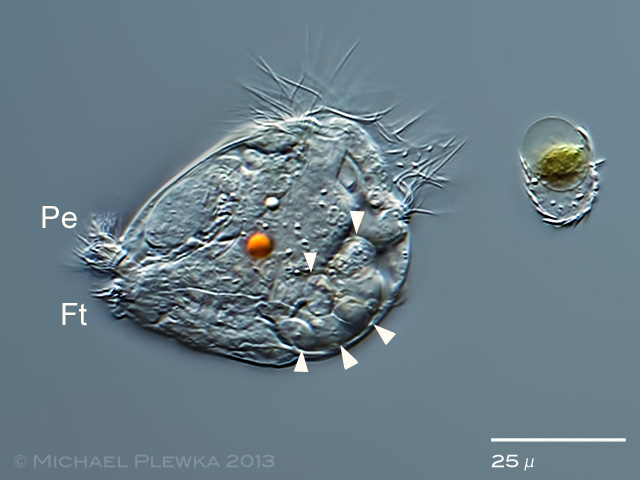 |
| Polyarthra vulgaris; the male has no eyespot and is very small. The arrowheads point to some of the sperm cells. Pe: penis; Ft: foot the conspicuous orange spot is a lipid droplet (DIC). |
 |
| Polyarthra dolichoptera carrying a resting egg . |
|
|
|
|
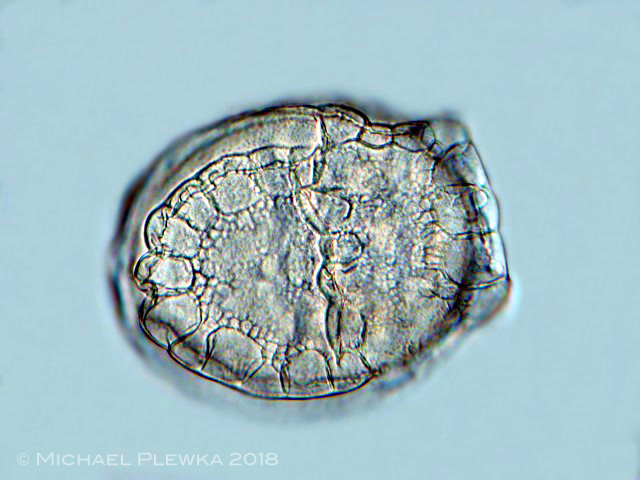 |
| Filinia longiseta; resting egg |
 |
| Filinia longiseta; resting egg |
|
|
|
| left image: Ptygura pilula ; resting egg right image: Polyarthra vulgaris |
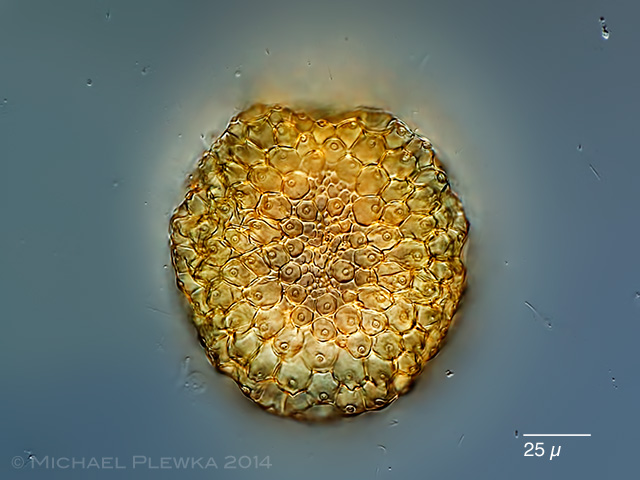 |
| Hexarthra mira ; resting egg |
 |
| Euchlanis triquetra ; resting egg |
 |
| Ascomorpha ecaudis ; resting egg |
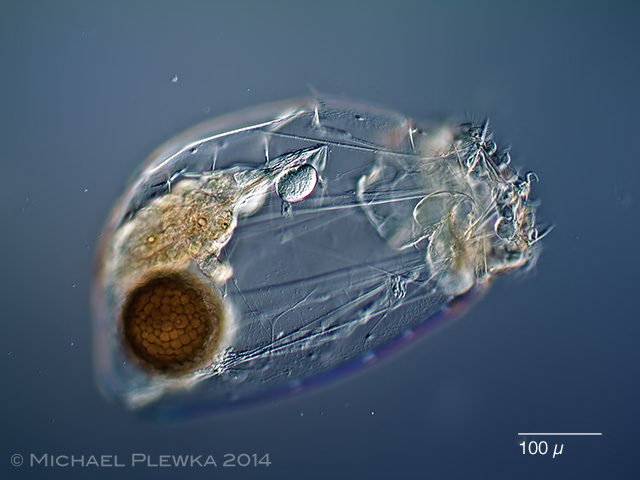 |
| Asplanchna girodi; resting egg |
 |
| Lecane bulla; while in many species the resting eggs are carried around by the femalesoutside of the body. In other species the resting eggs remain in the body of the mother until death. The lorica of the corpse may serve as a protection of the egg. If the lorica desintegrates the resting egg is set free. |
|
|
|
|